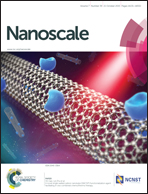Double loaded self-decomposable SiO2 nanoparticles for sustained drug release†
Abstract
Sustained drug release for a long duration is a desired feature of modern drugs. Using double-loaded self-decomposable SiO2 nanoparticles, we demonstrated sustained drug release in a controllable manner. The double loading of the drugs was achieved using two different mechanisms—the first one via a co-growth mechanism, and the second one by absorption. A two-phase sustained drug release was firstly revealed in an in vitro system, and then further demonstrated in mice. After a single intravenous injection, the drug was controllably released from the nanoparticles into blood circulation with a Tmax of about 8 h, afterwards a long lasting release pattern was achieved to maintain drug systemic exposure with a plasma elimination half-life of approximately 28 h. We disclosed that the absorbed drug molecules contributed to the initial fast release for quickly reaching the therapeutic level with relatively higher plasma concentrations, while the “grown-in” drugs were responsible for maintaining the therapeutic level via the later controlled slow and sustained release. The present nanoparticle carrier drug configuration and the loading/maintenance release mechanisms provide a promising platform that ensures a prolonged therapeutic effect by controlling drug concentrations within the therapeutic window—a sustained drug delivery system with a great impact on improving the management of chronic diseases.


 Please wait while we load your content...
Please wait while we load your content...